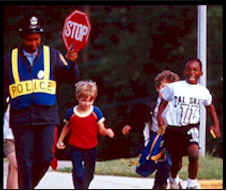|
The demand for high-quality transportation
alternatives in the nation’s metropolitan areas is growing, as
Congress heads towards consideration of the reauthorization of
the Transportation Equity Act for the 21st Century
(“TEA-21”).
Congress authorized more than 190 fixed-guideway
projects during TEA–21 and it is estimated that there are at
least 275 other fixed-guideway projects being
studied.1
There are at least 40 fixed-guideway projects in final
design or preliminary engineering and approximately 130
projects currently being studied.2
This growth in demand is
also confirmed by success at the ballot box. Sixty-nine
percent of the transit-oriented referenda offered to voters in
2000 were passed. And localities, through the use of dedicated
local sources of funds, are absorbing a higher and higher
portion of the cost of new transit projects: localities now
contribute more than 50 percent of the cost of all rail
projects being built in the United States, compared to the
statutory local match requirement of 20 percent.
This mainstream movement
toward transit will compel Congress to respond during the
reauthorization of TEA 21. The nature of
Congress’ response is uncertain, though, as the terrorist
attacks of September 11th have completely altered the
budgetary climate for the foreseeable future:
- The budget surplus has declined significantly due
to the President’s tax cuts adopted earlier this year. New
spending approved in response to the terrorist attacks of
September 11th has broken the Social Security “lock box” and
could result in Congress returning to deficit spending by
the end of FY 2002.
- The FY 2002 Budget Resolution limits growth in
federal program spending to four or five percent, compared
to current annual growth in the transit program of 7.6
percent annually.
- Gasoline tax receipts have been leveling off over
the past 18 months.
- If the transit program were to continue to grow
at 7.6 percent annually the funds dedicated to transit in
the Highway Trust Fund would begin to run a negative cash
balance in either 2007 or 2008 – the fourth and fifth years
of the potential TEA-21 Reauthorization Act.
These facts are extremely
important. The
transit program will rely on the gasoline tax (2.86 cents of
the 18.4 cents federal tax), which will contribute $5.4
billion in FY 2002, and General Funds, which represent about
$1.34 billion, to support the $6.74 billion transit program in
FY 2002. The
current projections for the federal budget surplus, the
limitations on federal budget growth in the FY 2002 Budget
Resolution, and the inability of the current transit share of
the gasoline tax to support historical growth are ominous
signs for the transit program. They should serve as the
clarion call for transit supporters heading into TEA-21
reauthorization.
Thus, we are faced with
unprecedented demand for transit nationwide while federal
budget resources are increasingly constrained. There are a number of
options currently available, as well as several that Congress
could consider during TEA-21 reauthorization. Without
handicapping their likelihood for success, I would suggest
that Congress consider the following :
- Raise the gasoline tax by a nickel from 18.4
cents a gallon to 23.4 cents a gallon. Assuming that transit
continues to receive approximately 15.5 percent of the
gasoline tax revenues, the hike would generate an additional
$775 million annually for transit.
- Increase the share of the gasoline tax that
transit receives to 25 percent of any increase. Combined
with the five cent increase described above, the increased
share would generate an additional $450 million for public
transit.
- Dedicate additional General Fund revenues to
transit, either separately or in addition to any gasoline
tax increase.
- Promote additional flexibility in the highway
program by suballocating to the metropolitan areas a portion
of the National Highway System (NHS) Program, in the same
manner as the Surface Transportation Program. Additionally,
expand the definition of what is considered to be the “NHS
corridor,” to include acknowledgement that rail service does
not need to be immediately adjacent to the NHS corridor in
order to favorably impact congestion in that
corridor.
- Develop a program similar to S. 250, the High
Speed Rail Investment Act, which, as proposed, allows states
to leverage highway funds to provide capital to upgrade
Amtrak Equipment and rail lines, while also allowing states
to expand high speed rail service. A similar program
for transit would permit comparable capital investments in
rail transit service through the leveraging of highway funds
in the same manner.
The prognosis for each of
these options is uncertain. Each faces its own set
of challenges in today’s federal budgetary climate. Yet, the political
environment is very favorable. A growing number of communities
are expressing their support for more transportation options
at the ballot box. And more members of Congress are becoming
aware that voters expect federal funding to be provided for
rail projects in their communities. It is community
support – and the effectiveness of local citizens to express
their support – for transportation choices that will result in
Congress considering and adopting some or all of these options
as part of TEA-21 reauthorization.
Jeffrey F. Boothe is
partner in the law firm of Holland & Knight, LLP. For the
past five years, Mr. Boothe has chaired the New Starts Working
Group which advocates support for new rail projects on behalf
of transit authorities, metropolitan areas, engineering firms
and rail car manufacturers. He can be reached at
jboothe@hklaw.com
.
Notes
1 American Public
Transportation Association Survey, November 1999.
2 Annual Report on
New Starts:
Proposed Allocation of Funds for Fiscal Year 2002,
Federal Transit Administration, May 2001.
|


